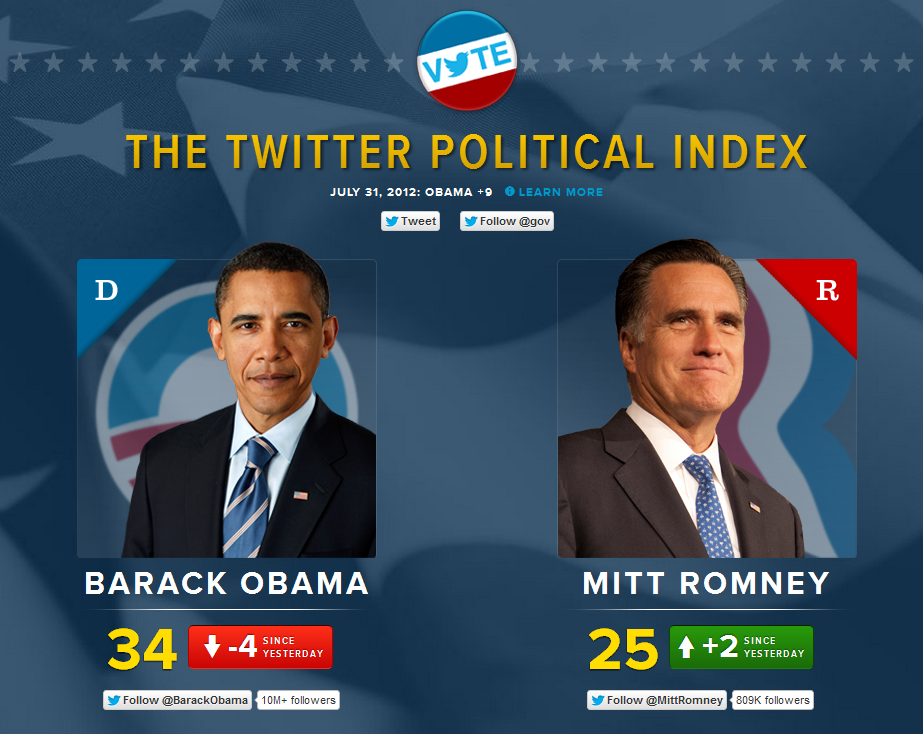With only three months until the U.S. presidential election, Twitter launched has launched a new service that will be able to gauge how Twitter users are feeling about the candidates.
The Twitter Political Index—or Twindex for short—is collaboration between the Twitter Government and Politics team, social media analyzer Topsy, and polling firms North Star Opinion Research and The Mellman Group. It will measure the sentiment of Twitter users towards President Barack Obama and Republican nominee Mitt Romney.
More people are using Twitter than ever. Six minutes of tweeting represents the full number of tweets sent out on Election Day 2008, according to Twitter.
Essentially, over a 24-hour period, Twindex will sweep more than 400 million tweets that either mention a candidate’s last name or mentions a candidate’s Twitter handle directly, similar to what London is doing to determine the Olympic mood.
Each candidate is scored on a percentage. Twindex examines the tweets involving Obama and Romney and compares the sentiment of those tweets to all of the tweets posted during the day. A candidate’s score is then determined looking at how many tweets about the candidate are positive and the number of tweets that are positive overall
For example, if Romney had a score of 59, that would mean tweets involving his name or Twitter handle are more positive than 59 percent of every tweet posted that day.
The Twindex is updated at 8pm ET every night to reflect the day’s sentiment. The latest Twindex is from July 31 and shows that Obama has a slightly higher number of 34 compared to Romney’s 25.

Twitter’s Head of Government, News, and Social Innovation Adam Sharp said that the goal is not to replace traditional polls and that it is not a perfect representation of American opinion.
“It lends new insight into the feelings of the electorate, but is not intended to replace traditional polling–rather, it reinforces it,” Sharp explained.
Sharp points out that the ratings often correlate with approval ratings from Gallup, but when the two numbers do not align, Twindex offers a look at public opinion.
“That is where the Twitter index is providing a real service to journalists, because it’s where we are saying we don’t have a complete picture, and need to be asking better questions,” Sharp told Wired.
Topsy will provide detailed data analysis for users to see beyond the Twindex number and an election meter from USA Today pinpoints news items on the chart so people are able to see how news stories about the candidates affect their popularity on Twitter. Looking back, Obama announced that he supported gay marriage on May 9, and that day he went from a Twindex rating of 25 to 59.
If 2012 is going to be the “Twitter election,” as CEO Dick Costolo once proclaimed, this service could be an early indicator of success at the ballot box.
Photo via aflcio


